Our History

The first regular pastor of the church was Rev. T.J. Crocker who served from 1900 until his death in 1905. Again, from the Day dated June 12, 1909: “Shiloh Baptist Church – High Street – will hold services in memory of Rev. Thomas Crocker. The pastor, Rev. C.H. McDonald will lead the service.” Other pastors who served at various times were the Rev. John Shelton, Rev. D. Thomas, and Rev. St. Clair Grimstead. During Rev. Grimstead’s pastorate (1915-1932), extensive repairs and enlargement of the building were made. Rev. David Moss succeeded Rev. Grimstead and served until 1937.
In 1937, the church called Rev. Albert A. Garvin to serve. He was ordained on June 27, 1937 by Rev. Julian Taylor. Rev. Garvin served from 1937 until 1965. He was Pastor Emeritus until his death in 1972. Under Rev. Garvin’s leadership, the membership increased and Shiloh became an integral part of the community. For decades Rev. Garvin was the voice of the African American community of Southeastern Connecticut. He hosted a weekly Sunday night service broadcasted by WNLC.
When Rev. Garvin began his tenure at Shiloh, the largest attended service was at night as most of the congregation worked half days on Sunday. Sunday School was at 2:00 p.m. and BYPU was at 6:00 p.m. With the advent of World War II, the influx of defense workers and changes in the Navy, attendance at the 11:00 a.m. services began to increase and night service attendance decreased.
Read more
The first church clerk was Mrs. Lucy Leeks. Some of the others who served were Mrs. Bernice Thomas, Mrs. Beatrice Cook and Mrs. E. Rae Wongus. The first female head of the Trustee board was Mrs. Anita Hargrove. Shiloh had many working clubs including the Ladies’ Auxiliary, Fuel club, Dorcas Missionary Society, Christian Women’s Fellowship, Good Samaritans, Gardenia Club, and strong senior and junior choirs. Mr. and Mrs. George Peterson organized the Gospel Chorus. The Chandler Singers were organized by Mr. William Chandler and Mr. Lance Sanchious.
Under Rev. Garvin’s leadership, the church grew to such an extent that the building became too small for the congregation. Several sites were explored in anticipation of moving. When the county commissioners put out to bid the jail property that abutted the Shiloh property, the congregation decided to bid. The total amount of the building fund at that time was $6,000 and a bid in that amount was submitted. Others who had submitted considerably higher bids withdrew them out of respect for Rev. Garvin. The bid was accepted and the property was deeded to Shiloh on October 26, 1958. All of the legal work was done gratis through an attorney friend of Deacon Luther Eccleston. Because the building fund was depleted, the congregation and friends of Shiloh did much of the demolition and rebuilding. The cellblock filled what is now the sanctuary. The walls were about a foot and a half thick. Mr. Robert Tobey used much of his equipment gratis to help tear out the cellblock and help haul the rubble away. Every Saturday the men came and did the manual labor and the women cooked lunch for them. It was a real family/community effort.
In 1959, the Sunday School moved to the “new development” as the new facility was called. In 1962, the march from the old building to the new development was made and services were held in the sanctuary for the first time. After the move into the new sanctuary Mrs. Isabelle Rogers, Mrs. E. Rae Wongus, and Mr. William Chandler gave a series of programs raising funds for air conditioning, drapes, carpeting, and pew cushions. In 1966, Mrs. William Stamm donated the first stained glass window. Mrs. Cyril Hylton and friends of Shiloh donated the other two stained glass windows, all of which grace the pulpit today.
Rev. Lem Sherman Covington succeeded Rev. Garvin, however, a schism occurred in the church and attendance lagged. Many Sundays saw only a hand full of parishioners in attendance but the Gospel Chorus and our faithful Warriors – Deacon Otis Brown and Deacon Mitchell Hyslop – were there every Sunday. Shiloh persevered until Rev. Charles Brown was called as interim pastor in December 1971. In 1973, Rev. Brown accepted a full time pastoral position at Shiloh. Under Rev. Brown’s leadership the church made a comeback and many new members were added. The original mortgage for the “new development” was burned in May 1976. Garvin Chapel was renovated, a new piano was acquired for the sanctuary and a bulletin board was established for the front of the church. Rev. Brown stayed until April 1983. After his departure, Shiloh was without a regular pastor while the Search Committee did extensive research on candidates for the position.
On October 7, 1985, after an extensive search, Shiloh was blessed with a shepherd, Rev. Benjamin K. Watts. He was installed as pastor in January 1986. Under Pastor Watts leadership the congregation continues to grow. A balcony was built to accommodate the increase in numbers, the administrative wing was completed, a 15-passenger van and a 29-passenger bus were purchased. To accommodate further growth and the diverse needs of the congregation, an 8:00 a.m. worship service was added to Sunday service. Wednesday Bible Study increased 100-fold. The Abundant Life radio and television ministry extends the worship experience into homes across Southeastern Connecticut. High Street was renamed Garvin Street in honor of the late pastor. One of the greatest achievements to date has been the building of the Shiloh Family Life Center, which houses a preschool and accommodates many community activities and has even housed a charter school. Many ministries and outreach programs have been developed under Pastor Watts’ tutelage that address the spiritual, physical, and social needs of the diverse congregation and community served by Shiloh.
Shiloh was built on a solid foundation of people of strong faith and service to the Lord and the New London community remains as a beacon of light and hope for all.
